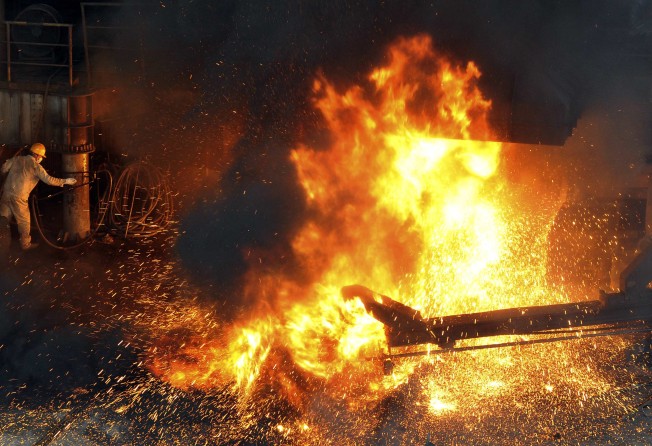Has China reached ‘peak steel’?

A term gaining currency among China commodity watchers is “peak steel”, something that sounds ominous, especially to iron ore and metallurgical coal miners.
The increasing market consensus is that China is at, or close to, reaching the maximum level of steel output and demand.
If this is the case, it means China’s steel consumption will peak at levels well below what many in the market had expected only a few short years ago.
China produced a record 822.7 million tonnes of steel in 2014, roughly half of global output, according to data from the National Bureau of Statistics.
However, this was only 0.9 per cent higher than the previous year, representing the slowest annual growth rate in 33 years.
Even this modest increase in output was only achieved on the back of a surge in exports of steel products, which jumped 50.5 per cent in 2014 to 79.35 million tonnes.
Apparent steel demand in China dropped 3.4 per cent to 738 million tonnes, according to the China Iron and Steel Association (CISA).
These figures suggest that the “peak steel” proponents are probably on the right track, especially since a strong rebound in steel demand in 2015 is viewed as unlikely, given expectations of economic growth of around 7 per cent and ongoing problems of oversupply in residential housing.
It’s the slowing of economic growth, and the changing nature of that growth from export-led manufacturing and infrastructure to consumer-led consumption, that is the foundation block of most views that China is near peak steel.
To this can be added pressure to cut pollution, which has already resulted in some steel mills cutting output.
Pressure to limit the use of coal will likely result in further idling of steel capacity, especially in Hebei province adjacent to Beijing.
The main consumers of steel in China are, in order, property, machinery, infrastructure, automobiles and appliances, with property being bigger than the other four combined, according to research by Swiss bank Julius Baer.
Looking at the trends for these sectors, the bank said a slowing of urbanisation will result in property and infrastructure use of steel declining from 2020 onwards, while that for machinery, automobiles and appliances will increase.
The overall result is for China’s steel demand to trend sideways, and Julius Baer also expects per capita steel consumption to stay around 2013 levels of 545 kilograms per year.
Morgan Stanley also expects China’s steel production to trend sideways, peaking this year above 800 million tonnes, before slipping back to just under that level from 2017 to 2020.
This thinking is in line with what Chinese officials have been saying recently, with CISA chairman Zhang Guangning saying last month that the steel sector has entered a “period of peaking and flattening out”.
Even those who are more bullish on Chinese steel demand aren’t forecasting big gains in demand, and the forecasts of peak steel topping out above 1 billion tonnes a year are now largely discounted.
This is for the most part bad news for iron ore producers, even the big three that dominate global seaborne supplies.
It was largely the Anglo-Australian pair of Rio Tinto and BHP Billiton, as well as top producer, Brazil’s Vale, that had bet on a much higher level for peak steel in China.
Both Rio Tinto and BHP expect China’s steel demand to increase to 1 billion tonnes sometime in the 2020-2030 period.
This was the main justification behind their expansions that have swamped the iron ore market and helped drive the spot price down to a 5 1/2-year low of US$61.30 a tonne on February 2, less than a third of its peak in 2011.
The global miners are now concentrating on using their giant, low-cost operations to force out higher-cost competitors, both in the seaborne market and domestically in China.
While they have achieved some success in doing this, it means that prices will remain depressed for an extended period as any rally will encourage idled supply to re-enter the market.
Similarly, demand growth for metallurgical coal is also likely to slow in line with stagnating Chinese steel output.
The positive for iron ore and coal miners is that the earlier advent of peak steel in China also means that demand is likely to remain at a fairly constant level for longer.
It may be that 20 years of steel output of around 800 million tonnes per annum is better than a rise to a peak above 1 billion tonnes, followed by a sharp tailing off in the subsequent years.